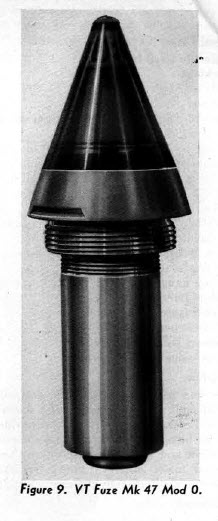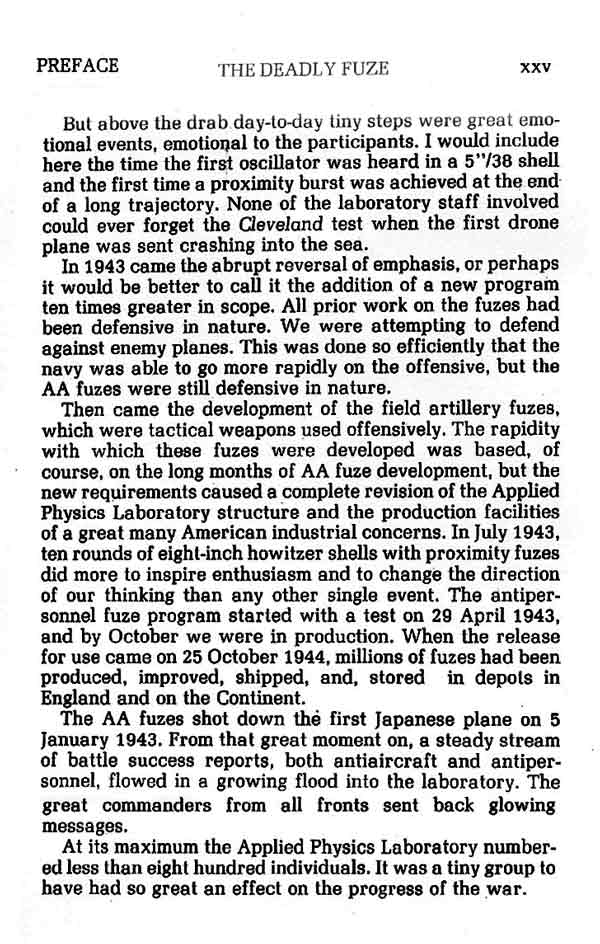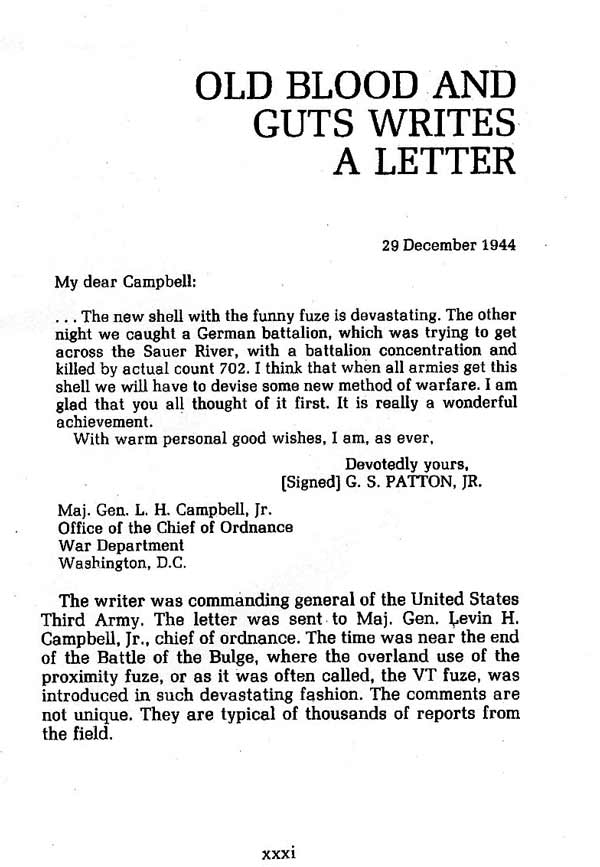
Ordnance Pamphlet 1480 (1st Rev.) describes U. S. Navy Radio Proximity (VT) fuzes for projectiles and spin-stabilized rockets, their operation, and characteristics and contains pertinent information on their usage.

The various types of proximity or influence fuzes for gun projectiles, howitzer projectiles, mortar projectiles, rockets, bombs, and other missiles are designated by all U. S. Services as VT fuzes. The term VT has no significance or meaning as an abbreviation, but was devised for general usage in shipment orders, stock cards, loading lists, etc. when security requirements during the war necessitated this.
This file was scanned two pages wide. The table of contents is hyper linked to go directly to the page on which you click. A link at the bottom of each page will return you to the table of contents.
This file is also indexed and searchable. Enter the phrase you want in your reader's search block. If that does not work, try a different phrase.

OP-1480 9.1 mb
The first video is background information about the development of the VT Fuze by Raytheon, the forces it undergoes and the principles of operation. A modified hearing aid tube was an integral part of the design. Gen. Omar Bradley appears second from left in a 1942 photo.
The second video is silent and shows VT Fuze testing at Dahlgren, Virginia where they test the VT Proximity fuze with live fire over a wire screen 70' above the water. You can see how accurately the fuze detonates the shell over the mesh.
The following are excerpts from the preface of the book, The Deadly Fuze. They show the dedication of the people who developed the fuze and the appreciation of one George S. Patton Jr., who realized it's importance to war at that time and in the future.


Related Material:
'The Secret Fuze' from 'All Hands' November 1945
Loading the 16 inch guns video
16" Gun Pages, The Stable Element,
These files require the free Adobe reader or browser add in to view. If you cannot open these files, you can download and install the free reader. Be sure to select the version for your operating system. (Windows Vista, XP, Mac, Linux, etc.)